Are you trying to help your class make sense of the reason a text has been written? Whether they’re working through a text where the author wrote for information, persuasion, or another reason, an author’s purpose anchor chart hanging in the classroom is a great reference point to remind your students why writers write!
But let’s face it: With all that you’ve got going on, sometimes coming up with a clever way to create yet another artifact of learning eludes you. Don’t worry. We’ve got you covered.
Our team of teachers at Teach Starter has gathered some of our favorite author’s purpose anchor chart ideas to give you a fresh way to tackle the topic in your classroom. Keep scrolling to see some clever examples and inspiration below!
Download our free PIE Author’s Purpose Anchor Chart for a head start!
Author’s Purpose Anchor Charts and Activities
The following author’s purpose anchor chart examples and activities are from teachers across the country and from our teacher team here at Teach Starter! Hopefully, they’ll inspire your own anchor charts and boost your students’ confidence.
Pie Anchor Chart
Photo courtesy of California second-grade teacher Kiki Perez
First up, we have California second-grade teacher Kiki Perez who put a delicious twist on the popular PIE chart: Persuade, Inform, and Entertain. Easy as 1, 2, 3, this simple yet effective author’s purpose anchor chart will help students categorize and understand what the author is trying to convey. Perez included cute, colorful drawings to help these ideas come to life.
Speaking of PIE, this Author’s Purpose Sorting Activity builds on that concept with 20 phrase cards for 2nd and 3rd graders to examine context clues and sort into three types of author’s purpose — inform, persuade, and entertain.
Photo courtesy of New Jersey Kindergarten teacher Mrs. Hesse
Kindergarten teacher Mrs. Hesse made her PIE chart into an interactive activity. Each student received two small pictures of books and predicted the author’s intent by placing them in a category. This is a great idea to try with your students after discussing the PIE acronym!
Photo courtesy of 5th-grade teacher Mrs. B
5th-grade math and social studies teacher Mrs. B sure makes her anchor chart easy as pie to comprehend! We love that she added what students should look for on the right-hand side to help them determine the author’s purpose through examples.
PIED Anchor Chart
Photo courtesy of Amber
We loved teacher Amber’s punny PIED author’s purpose anchor chart! She included an additional letter to her PIE chart, D, to include Describe as another author’s purpose category.
Her use of actual pie tins brings this anchor chart to life and can definitely be an inspiration for a year-round anchor chart for your classroom or reading center — grab a pack from the local dollar store, and use a glue dot to mount them on your pie chart paper.
Looking for an activity to extend the PIED concept?
These Comprehension Task Cards make a perfect post-anchor chart activity for your students to complete. You can choose to read the short story to your class aloud, independently, or in small groups. Afterward, have students complete the question worksheets and share their answers when everyone is finished.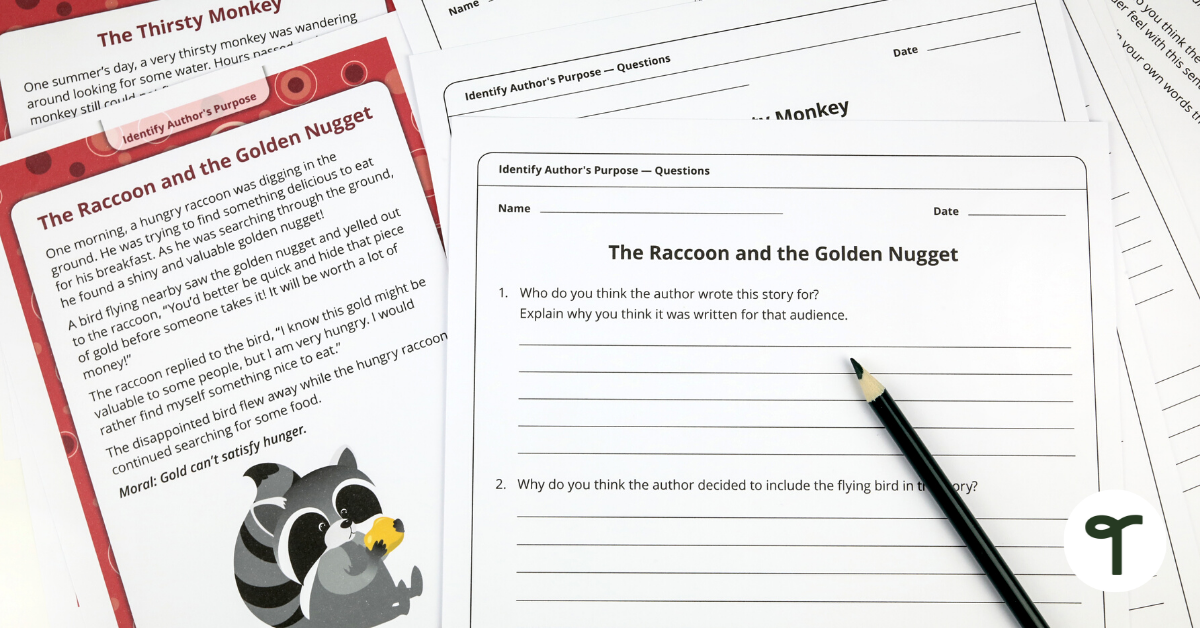
This pack includes:
- five comprehension task cards
- an enrichment task; where students use their creativity to make a product related to each text
- question worksheets for each text
- answers for teachers
ADE Author’s Purpose
Photo courtesy of 4th grade teacher Lauren Dustin
“When life hands you Author’s Purpose, you make lemonade.” We love 4th-grade teacher Lauren Dustin’s creative take on presenting an author’s reason for writing using a lemon and lemonade to present the author’s purpose. She used A, D, E: answer, describe, and present the author’s purposes.
Mix things up with a digital lesson using this Author’s Purpose Teaching Presentation in Google Slides format.
Why Writers Write
Photo courtesy of 3rd-grade teacher Miss Dancisin
As we know, there are many author purposes out there, and 3rd-grade teacher Miss Dancisin crafted this colorful anchor chart that covers some important reasons “Why Writers Write.” This is a great example of a poster that can be displayed in your classroom year-round to help your students with their reading and writing lessons.
Reading Comprehension Strategies: Anchor Charts
 If you just can’t get enough anchor charts, these 18 ready-made printable anchor charts will provide your class with concrete examples of reading strategies, including:
If you just can’t get enough anchor charts, these 18 ready-made printable anchor charts will provide your class with concrete examples of reading strategies, including:
- compare and contrast
- main idea
- author’s purpose
- fact and opinion
- context clues
Use these as classroom displays or student reference sheets for an interactive notebook.
Want to create more ‘aha’ moments with your students? Browse our Author’s Purpose and Craft collection for more worksheets, printables, and activities.


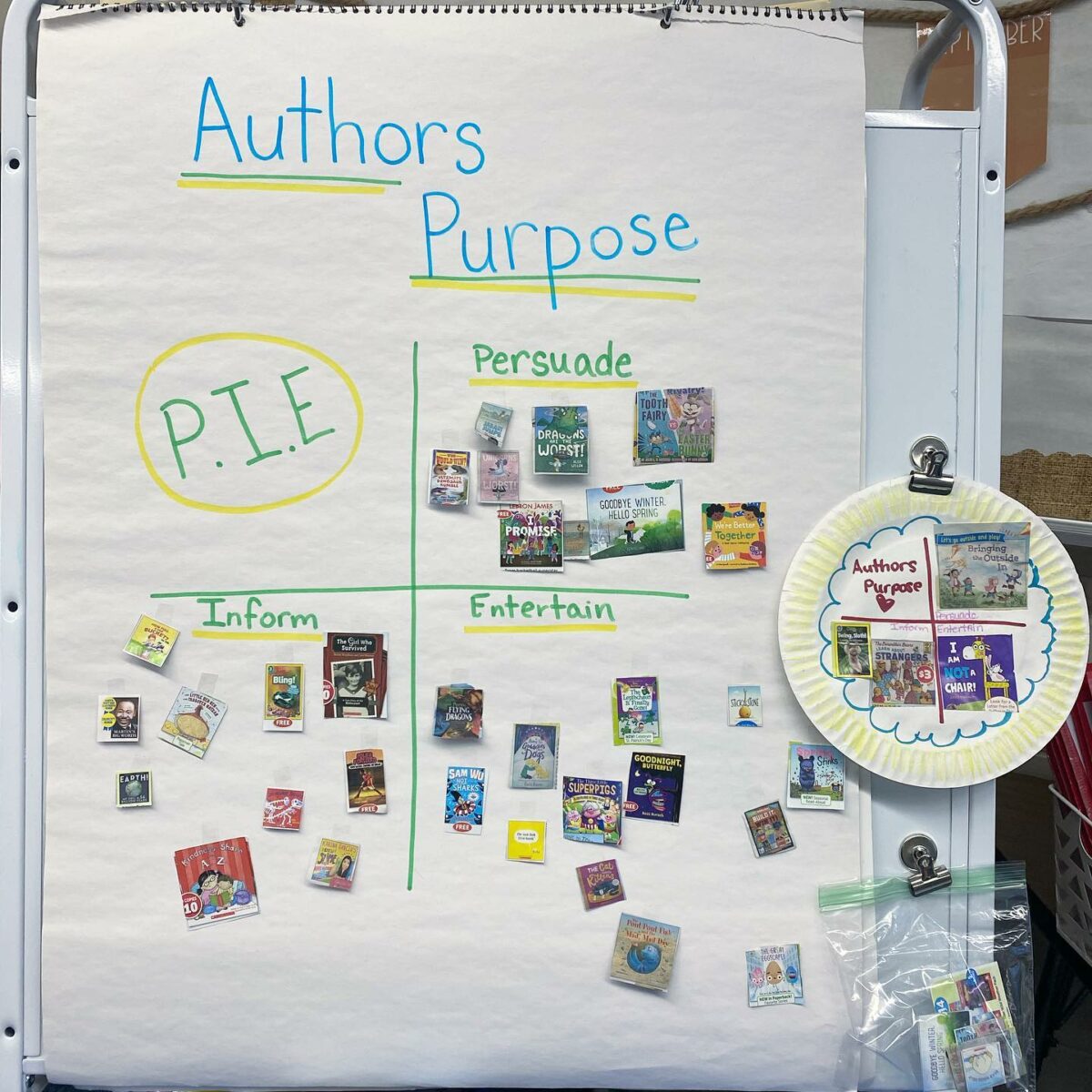
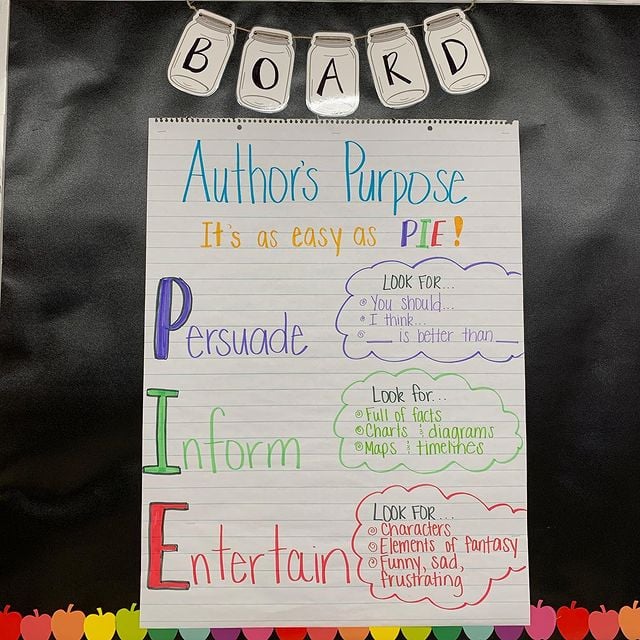
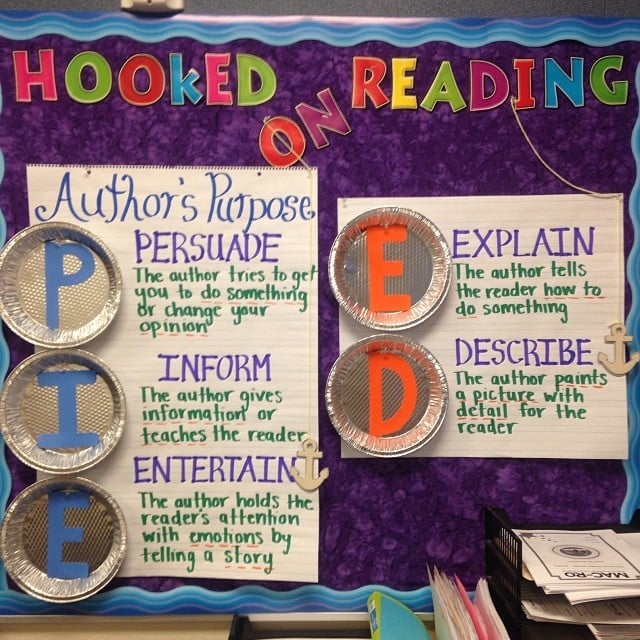
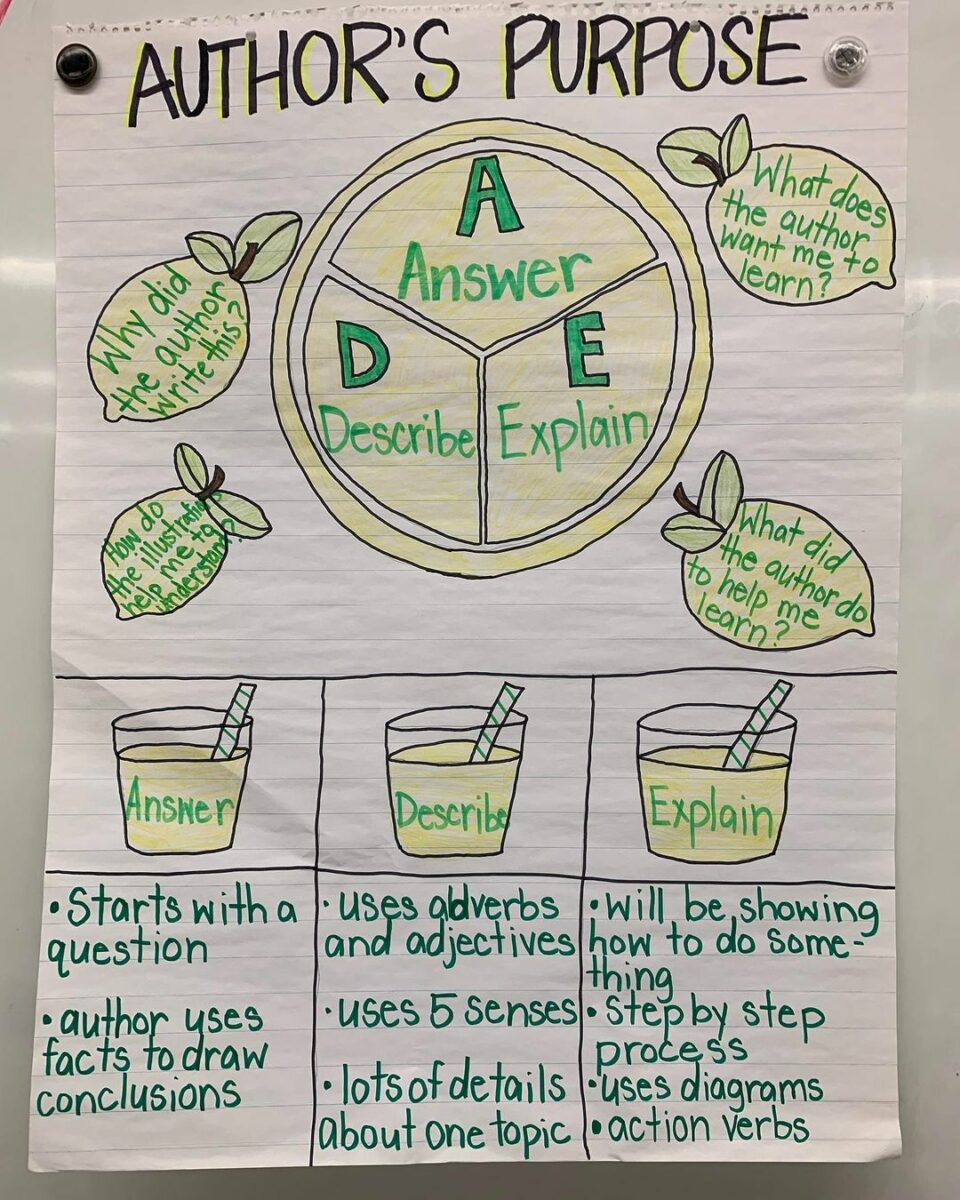







Comments